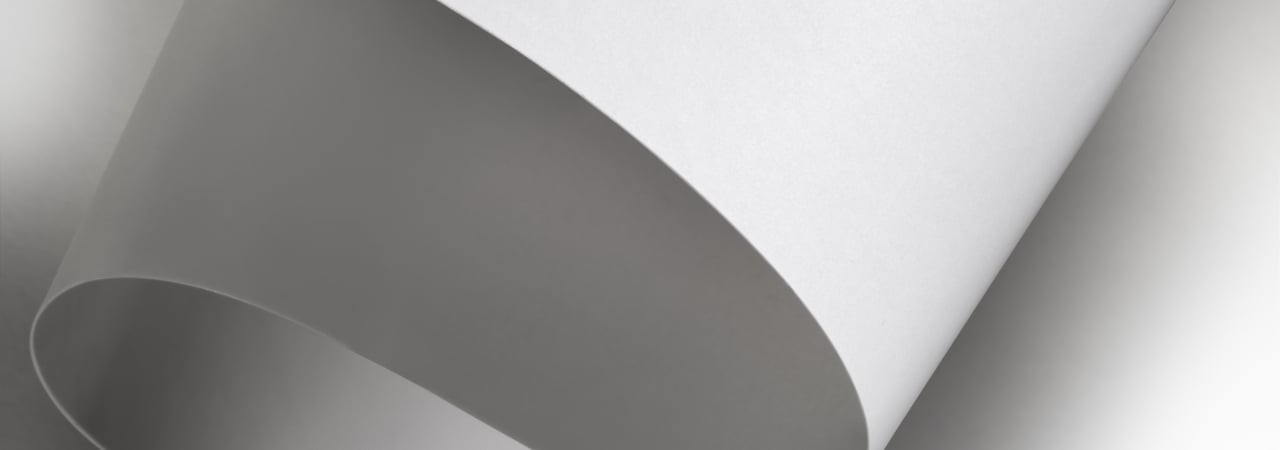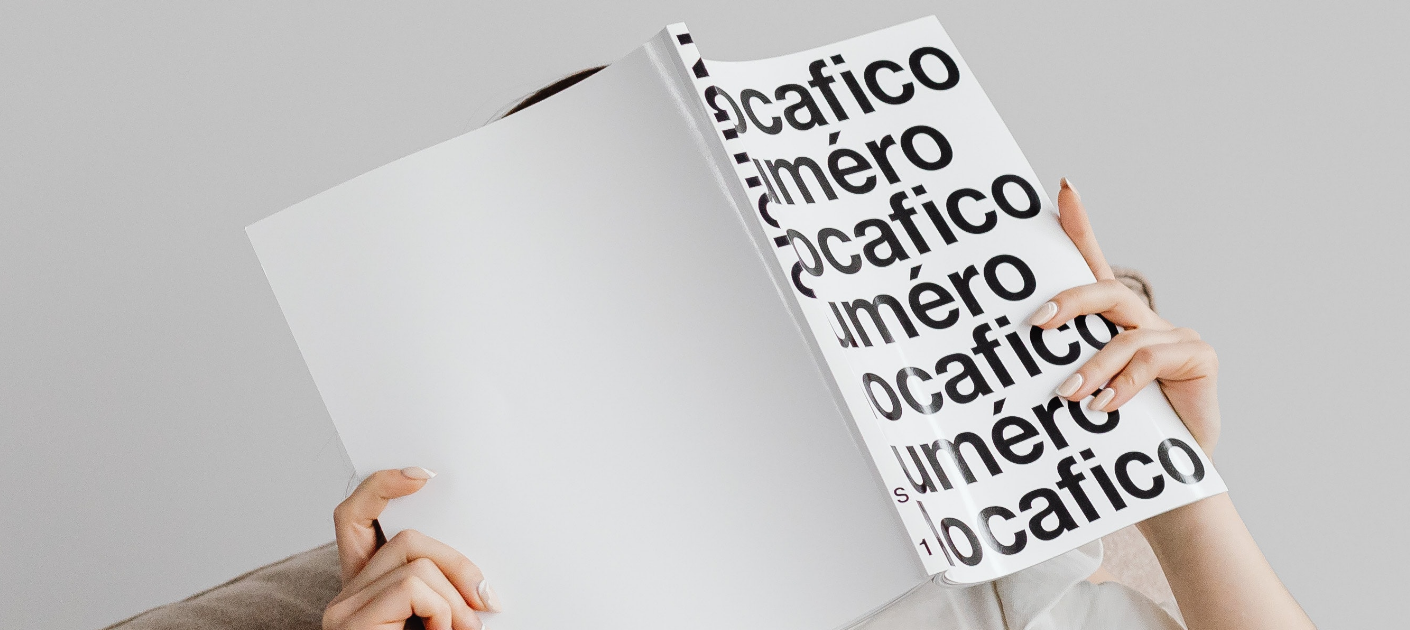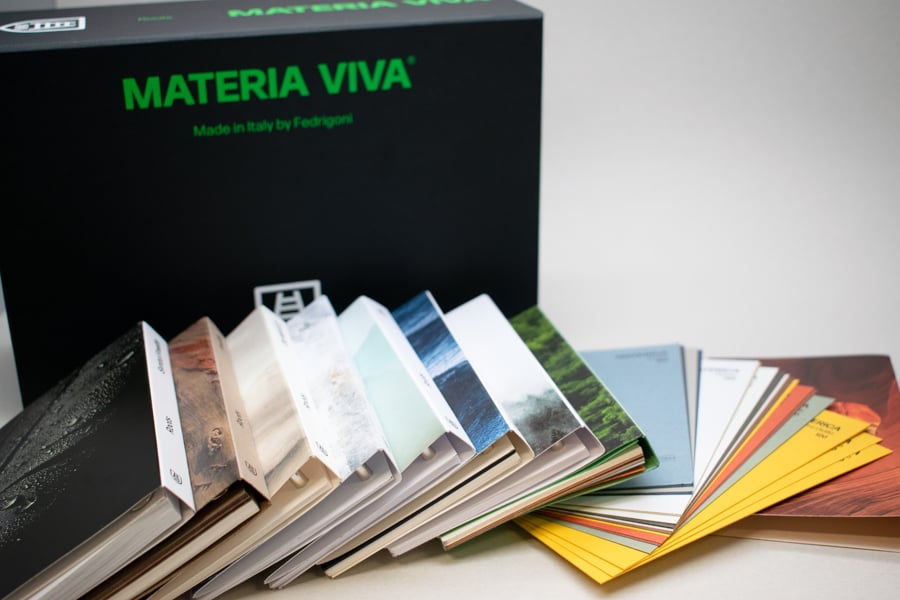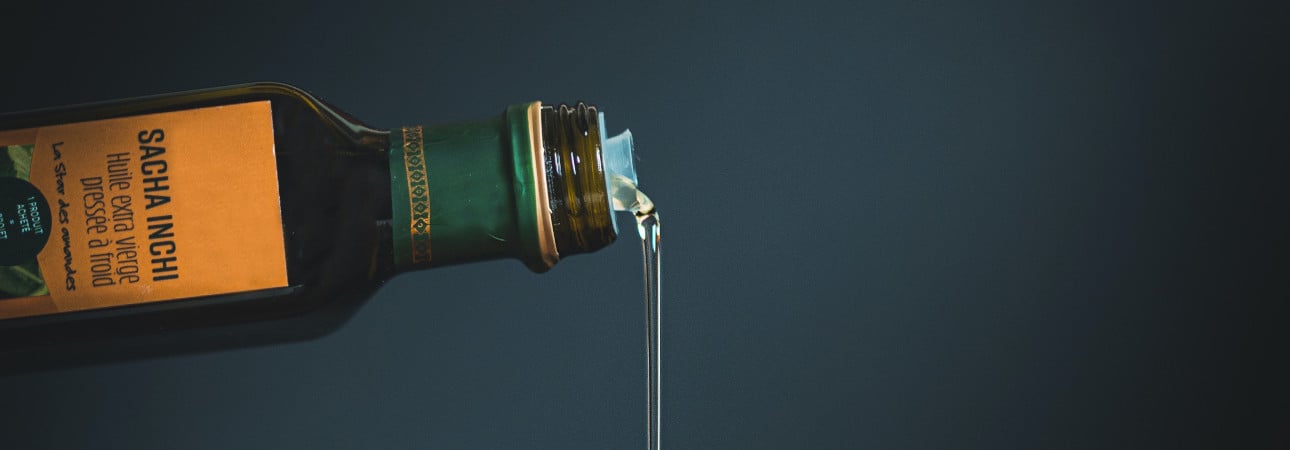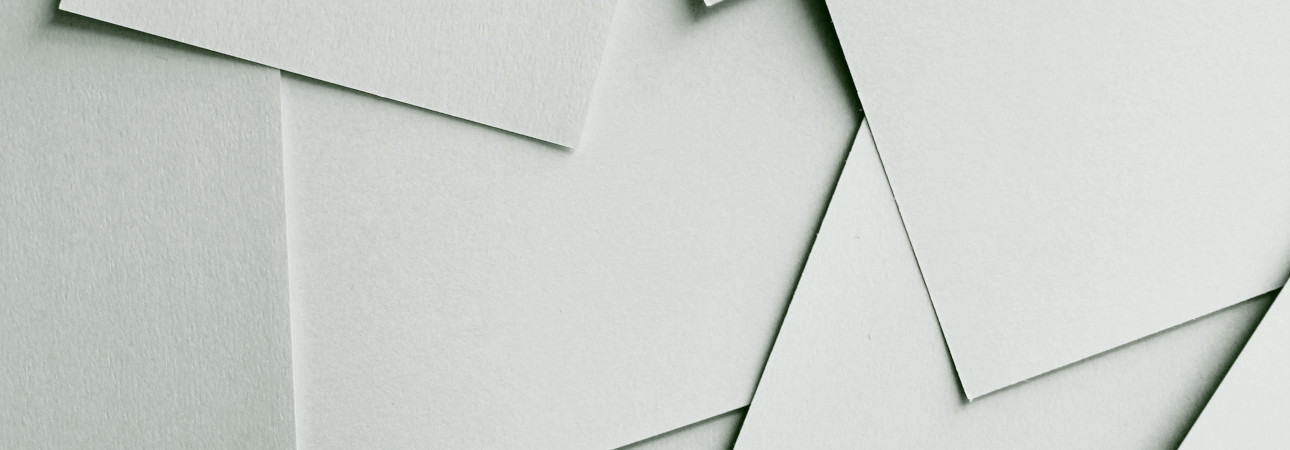Did you like the article? Share it!
Guide to Paper GSM: how to choose it?
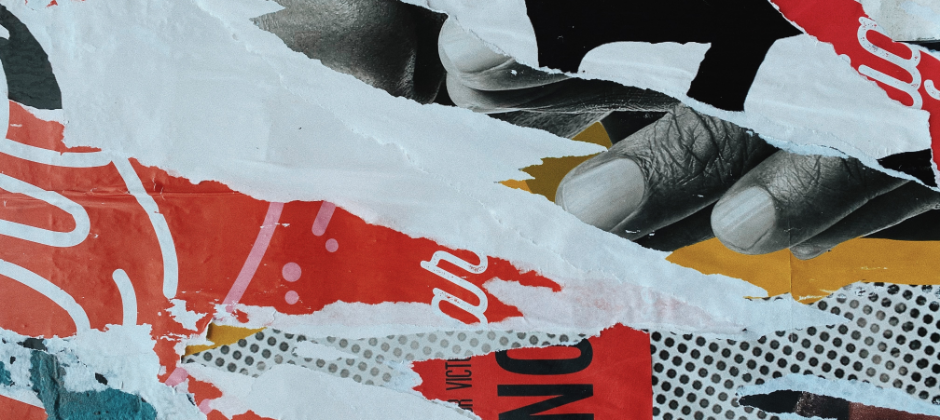
Choosing the paper GSM suitable for your design is a fundamental aspect to consider when printing a graphic project. The world of paper is vast and varied, and it can often be difficult to juggle, but it is essential to know how to make the right choice to obtain a result as close to your expectations. Here is a short guide to help you choose the best paperweight!
Often the choice of support is mistakenly underestimated when it plays a fundamental role. For example, the right paper can arouse sensations to the touch, capture the consumer's attention, improve aesthetics, and enhance product quality. To choose the right paper, however, you need to select the proper weight; to do so, you need to know the different types.
So, this article may be for you if you are dealing with a graphic project that will go to print. We will reveal all the most suitable weights for each of the most common printed products, with the aim that you can make informed choices that are as suitable as possible for your project.
Paper GSM table for your printed product
Adhesive labels: what is the ideal paper GSM?
What is paper GSM?
As mentioned before, paper GSM is a fundamental factor to consider and understand when it comes to printing. This is because it dictates specific characteristics both on a technical and design level. Before going into more specifics, however, let's try to give a clear definition of what we mean by paper weight. This is the ratio between the weight of a sheet expressed in grams and its surface of one square meter (1m2); hence the measurement is "grams per square meter". According to this principle, various types of paper have been weighed, starting from a sample sheet cut so that its surface is equal to one square meter (regardless of the length or width of the paper).
But be careful; the paper GSM is not to be confused with its thickness, which is otherwise expressed in millimetres. The two values do not coincide in any way, so much so that two sheets with the same thickness could have two different weights.
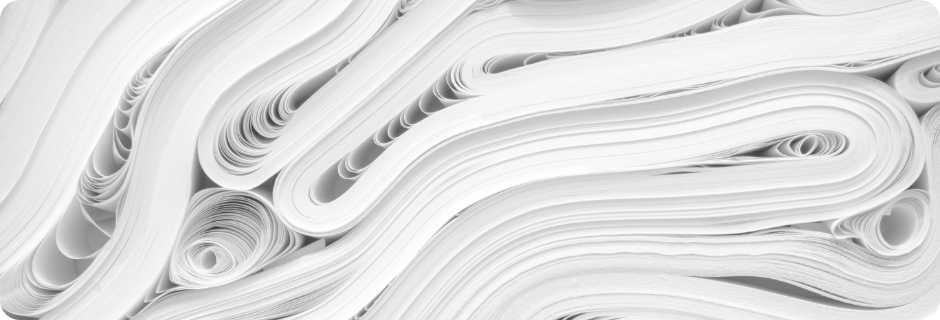
How to choose the paper GSM?
The paper GSM must be chosen according to the product you want to print. For example, paper with a higher weight is usually used for higher quality products because it can give a more premium appearance, but this is not always the case. Sometimes, a paper that is too thick could create wrinkles or other unsightly effects with certain products. In contrast, in other circumstances, a paper that is too light could be transparent or not give the proper importance to your design.
However, there are no fixed rules for the choice. It is always advisable to evaluate case by case, keeping in mind the graphic product's nature, function and target of a reference, and then proceed with choosing the most suitable support. Each weight, however, is ideal for specific applications. Knowing them can help you in your choice. Here is a brief guide to the most used paper GSM and the products they are usually associated with. Are you ready? Let's begin.
Paper GSM table for your printed product
Leaflets and posters (130-170 gr/m2)
Business Cards (250-400 gr/m2)
Small format paper converting (300-400 gr/m2)
Medium format paper converting (400-600 gr/m2)
Premium business cards (400-600 gr/m2)
Tissue paper (18-50 gr/m2). Tissue paper is purposely the lightest paper available on the market. Its function is to coat a product, so it must have a light consistency to quickly take its shape without breaking. Also note that this type of paper is so thin that it allows light to pass through, making it slightly transparent. It is recommended for packaging any product, from the bottle of wine to the dress.
Newspaper (30-55 gr/m2). The typical paper on which newspapers are printed. It has a weight of between 30 and 55 g/m2, as the newspaper, being made up of numerous pages, must remain highly cheap and accessible and not be excessively thick.
Magazine paper (70-90 gr/m2). Magazines play a more luxurious role than newspapers and are designed to last longer than newspapers. For these reasons, the typical paper weight of magazines can reach 90 gr/m2 or a little more. In addition, a surface coating is often applied to these papers to embellish them, contributing to the resolution of images or illustrations typical of magazines.
Label paper (80-130 gr/m2). The labels, whether paper, glue or adhesive, have a wide range of weights. In the world of labels, “personalization” is the keyword. Therefore, the types of paper weight used are very many and depend very much on the context and product type. In any case, later in the article, you will find a dedicated section in which we go into more detail. If you want to jump directly to that point, click here.
Leaflets and posters (130-170 gr/m2). Items that need to be handled or hung need heavier weights. Brochures, leaflets, flyers and posters tend to have weights that allow them to be held without stressing them. They range from 130 to 170 gr/m2.
Brochure (170-250 gr/m2). Brochures are a product that requires more care than brochures, which is why they tend to be printed on thicker paper to give added value and more excellent resistance. These papers can be coated, natural or speciality papers such as embossed and pearl. A brochure can also have different weights within the same product: the lowest paper weight is intended for the internal pages, while the highest paper GSM is designed for the cover to give it strength.
Business Cards (250-400 gr/m2). Business cards are products that have to withstand a lot of physical stress, be tear resistant, and often get crumpled in the wallet. Therefore, to produce a business card with excellent durability, you need to start with a minimum paper GSM of 250 gr/m2, but our advice is to stay above 300 gr/m2 to have a quality product.
Small format paper converting (300-400 gr/m2). With paper converting, we mean all those forms of packaging that must support or pack other products, such as boxes for products. This implies that this type of product must have a paperweight such as to be able to support the weight of the objects they contain and withstand any knocks during transport.
Medium format paper converting (400-600 gr/m2). As the weight of the product or its dimensions increases, the paper GSM must also increase. For example, if we are talking about a box for a bottle of wine, a minimum paper weight greater than 400 gr/m2 will be required. In these cases, the tendency is to combine two materials (for example 2 sheets of 250 gr/m2 weight), both to be able to save in terms of costs and to have an advantage on a technical level; with the coupling of the sheets, it is possible to obtain a different orientation of the paper fibres. This will give greater resistance to the box allowing it not to bend once the printing is completed and the product is inserted.
Premium business cards (400-600 gr/m2). If you've always hated "soft" business cards, you are probably looking for a thick print. There are business cards with significant paper GSM, which in most cases, are coupled with different papers to create a touch of design and luxury. In short, a great way to stand out from your competitors! We are talking about weights between 400-600 gr/m# in this case.
Large Format (+ 800 gr/m2). POS, Shipping or e-commerce boxes and other products require very high weights. Here you enter the world of corrugated cardboard and laminations. The corrugated cardboard comprises two coupled cards, which wrap a third central element in corrugated paper, like a sandwich. Depending on the height and frequency of the wave, there will be different corrugated boards with different technical properties.
Adhesive labels: what is the ideal paper GSM?
As you can see, there are various aspects to consider regarding the choice of paper weight, and the option is complicated regarding adhesive labels. The paper GSM for adhesive labels must be chosen to consider two main factors: the type of support the label will be applied and the effect to be obtained concerning the product's target and positioning on the market.
A marked natural or cotton paper, among the heaviest in the catalogue, will undoubtedly give your product a premium and elegant touch. Therefore, these papers lend themselves particularly well to creating high-quality wine and liqueur labels or enhancing products of excellence. However, their application may be complex on substrates with a minor or curved surface, such as a bottleneck.
For lighter-GSM paper, the ideal is coated paper. Smoother and easier to work with, it offers excellent creative possibilities for printing, greater clarity and high readability of texts. The lighter weight of paper is, therefore, suitable to give a modern and glamorous touch to your products, especially if your design is rich in text or has elaborate graphics. This paper also has the advantage of being able to be applied even on surfaces of small dimensions or with particular shapes.
On the other hand, if you are looking for an adhesive label paper with extra fine weight, the best choice is a plastic material. Polypropylene, for example, makes it possible to reach 44 gr/m2, a weight unthinkable when it comes to paper. Moreover, these plastic materials give the product a minimal and essential “no label” style and are very suitable for cosmetics or particular formats.
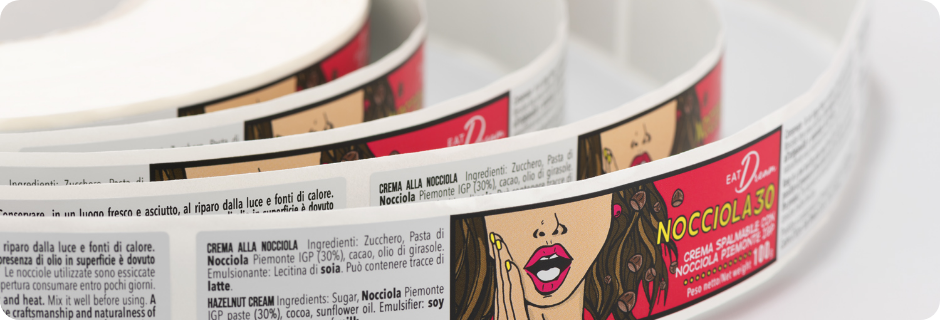
As mentioned before, no hard-and-fast rules exist for choosing the paper GSM. The advice given so far is, in fact, generic indications. However, if you are not faced with surfaces that could complicate the application and want to obtain truly innovative effects, you can dare with unprecedented combinations! For example, a particular wine can be enhanced by a plastic label, resistant to humidity, with a no-label result. At the same time, choosing a natural paper for an organic beauty product can enhance the concept of “green” and increase consumer confidence. Discover what we like to call the magical world of paper and experiment!
Well, we've reached the end of this short paper GSM guide. We hope we have been comprehensive enough without boring you too much. Choosing paper weight is essential to obtain a quality print that lives up to your expectations. Thanks to this guide, you now have the basics to make the right decision, but if you still have doubts about the most suitable paper GSM for your product, the best thing is always to contact expert hands in printing and design, who will surely be able to advise you.
However, remember that it is essential to make this choice already in the graphic and product design phase to avoid being caught unprepared at printing!
So if you have any questions, write to us. The Oppaca team will be happy to help you. And remember, if you want to touch papers before choosing the perfect one for your product, you can order one of our samples containing all the cards in the catalogue. If you already have a precise idea and want confirmation, you can request proof of press.
Next

